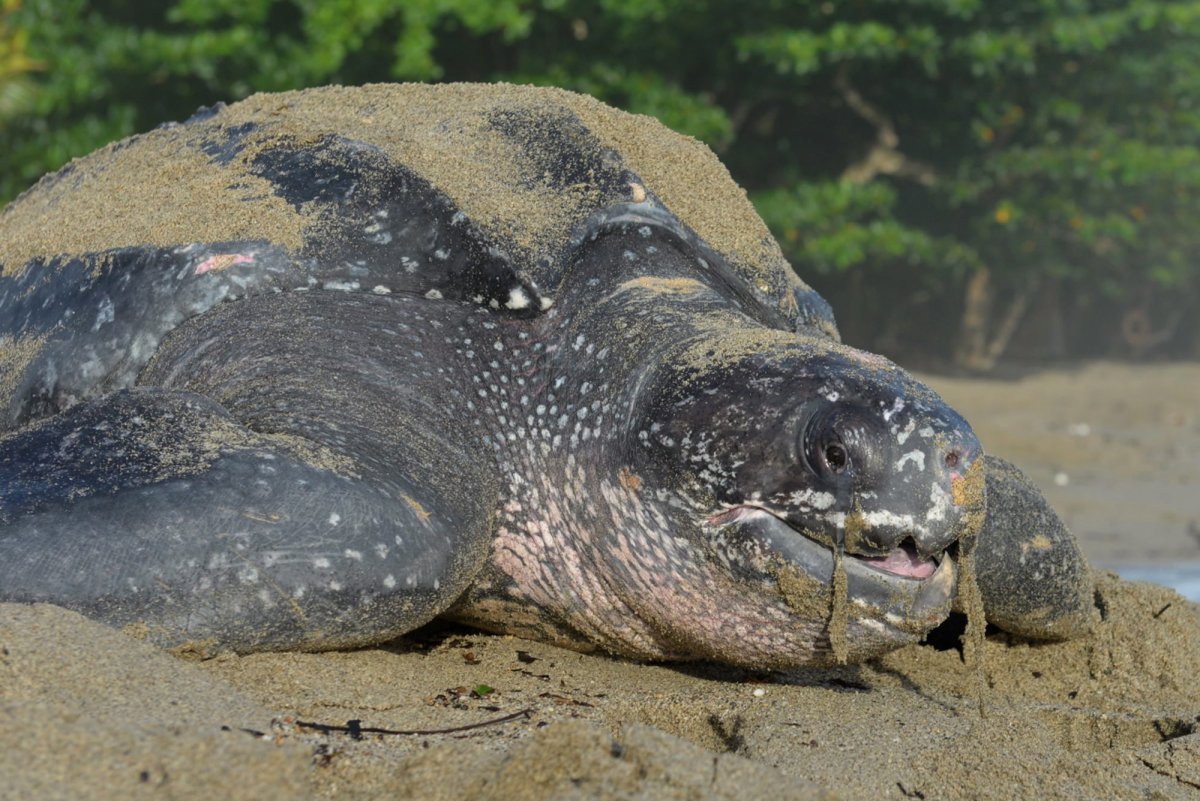Six years after being selected as an area of interest for a Marine Protected Area (MPA), St. Anns Bank off Cape Breton Island has been declared an MPA to conserve and protect the habitats and species in the area, including the endangered leatherback turtle.

The announcement was made Thursday by Fisheries and Oceans Minister Dominic LeBlanc as part of 2017 World Oceans Day.
The MPA is located east of Cape Breton Island, N.S. and encompasses 4,364 sq.-kilometres — equivalent to three-quarters the size of Prince Edward Island. It takes in the Scaterie Bank, most of St. Anns Bank and part of the western edge of the Laurentian Channel.
The Bank is the largest MPA to be announced since Canada announced its five point plan to protect five per cent of Canadian marine and coastal areas by 2017 and 10 per cent by 2020.
READ MORE: Purchase protects additional lands around N.B. marine nature reserve
Susanna Fuller, senior marine coordinator at the Ecology Action Centre in Halifax, said the designation was “a long time coming.”
“St. Anns Bank is a good news story,” Fuller said. “I think the stakeholders and environmental groups and fishing industry really worked hard together to come up with boundaries that we all agreed to.
“I think St. Anns Bank is something everybody who was involved can be proud of.”
What is and isn’t allowed in the MPA
Many human activities, such as commercial fishing, are prohibited in a majority of the area. Oil and gas activities will be off-limits in the entire MPA. Bottom-trawling is also not permitted in the entire area.
LeBlanc said the Bank is also the third MPA designated in Canadian waters in the past eight months.
The MPA is divided into four management zones. Specific activities are allowed in each zone but they cannot compromise the conservation objective of the MPA. The Core Protection Zone, which takes in 75 per cent of the entire MPA, prevents almost all forms of extraction.
READ MORE: ‘Unwanted fish’ could be the biggest threat to endangered marine life: report
Some allowances include Aboriginal fishing, public safety, national security and marine transportation. Scientific research is also allowed, but would need to be approved by the Department of Fisheries and Oceans first.
Zone 2, which encompasses 720 sq.-km of the MPA, was also expanded to allow for lobster and halibut fishing, according to Maxine Westhead, section head for the DFO’s protected areas and conservation planning group.
“We took into account the existing lobster footprint for that line being drawn,” she said. “Zone 2 was expanded to allow for more fishable area.”
Cost to conserve
A cost-benefit analysis was also taken of what fishing activity was going on in the MPA. From the analysis, they estimated about $160,000 lost landings due to the measures.
“That’s less than one per cent of the total activity that goes on on eastern Cape Breton,” said Cory Large, a DFO senior economist.
He went on to say when looking at which fisheries would be impacted most, about half would be halibut longline, a quarter of the snow crab fisheries and another quarter with the red fish, shrimp, sea urchin, rock crab and scallop industries altogether.
READ MORE: Scientists say carbon emissions could harm marine life in Atlantic Canada
The ongoing management and monitoring will cost approximately $280,000 a year for the Bank. This money will include scientific research, monitoring, surveillance, enforcement, public education and any other educational activities to be undertaken, Large said.
How it came together
The St. Anns Bank was first selected following a public consultation process. Westhead said it received the most support and expected to have the least economic impact.
Following this an advisory committee and fishing industry working group was established to provide input, as well as engaging other groups including First Nations and Indigenous groups, before draft regulations were published in the Canada Gazette in December 2016. From there, a public review period was held and comments received were used to develop the final regulations, which will be published in Canada Gazette 2 next week.
With the MPA, the habitats of various marine life will be protected. The area contains 30 species of sea sponges and sea pens, Atlantic wolfish, Atlantic cod, redfish, white hake, witch flounder and is a summer feeding area for the leatherback turtle. The habitats range in depths from approximately 30 to 400 metres.
READ MORE: Boundaries set: B.C.’s Georgia Strait to get government protection
Fuller, who had been on the stakeholder advisory committee, said establishing the protection helps give back.
“The ocean needs places to heal. We’ve used it for centuries and millennia and I would say it’s time for us to now give back to the ocean and I feel St. Anns Bank is part of us giving back,” Fuller said.





Comments